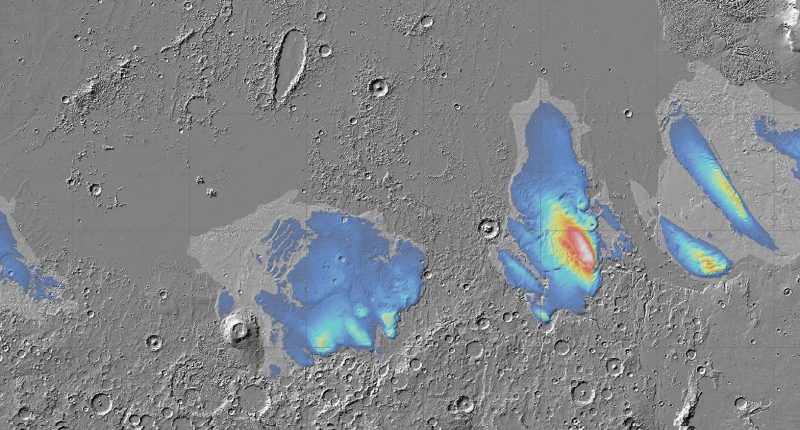ASTRONOMERS believe they have uncovered a large amount of water ice on Mar’s surface.
Scientists made this discovery in Mars‘ Medusae Fossae Formation (MFF), near the equatorial region of the Red Planet.
They used data from Mars Express’s MARSIS radar to identify the giant slabs of buried water ice.
These buried deposits, which are several kilometers thick, were first discovered around 2007.
However, scientists weren’t sure exactly what they had stumbled upon back then.
“Given how deep it is, if the MFF was simply a giant pile of dust, we’d expect it to become compacted under its own weight,” says physicist Andrea Cicchetti of the National Institute for Astrophysics in Italy.
“This would create something far denser than what we actually see with MARSIS,” she added.
“And when we modeled how different ice-free materials would behave, nothing reproduced the properties of the MFF – we need ice.”
In fact, there’s so much water ice buried there that if it were to melt, it would cover Mars in a shallow ocean between 4.9 to 8.9 feet deep.
“We’ve explored the Medusae Fossae Formation again using newer data from Mars Express’s MARSIS radar, and found the deposits to be even thicker than we thought: up to 3.7 kilometers (2.3 miles) thick,” says geologist Thomas Watters of the Smithsonian Institution.
Most read in News Tech
“Excitingly, the radar signals match what we’d expect to see from layered ice,” he added.
Watters also noted that the ice is similar to what scientists have observed from Mars’s polar caps.
It’s not clear exactly what led to the formation of the deposits, but it’s possible they were sculpted by Mars’ powerful winds.
Still, the discovery has given scientists hope that perhaps Mars has more hidden water elsewhere.
“This latest analysis challenges our understanding of the Medusae Fossae Formation, and raises as many questions as answers,” says planetary scientist Colin Wilson of the European Space Agency.
“How long ago did these ice deposits form? And what was Mars like at that time? If confirmed to be water ice, these massive deposits would change our understanding of Mars’ climate history,” Wilson added.
“Any reservoir of ancient water would be a fascinating target for human or robotic exploration.”
The research has been published in the journal Geophysical Research Letters.









